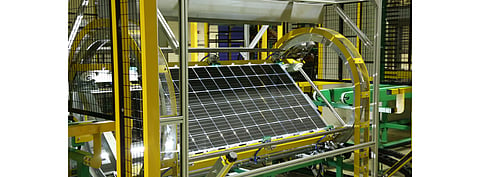

Enel Green Power (EGP) is set to expand its bifacial heterojunction (B-HJT) solar module production capacity from 200 MW annually at present to 3 GW at its current facility in Catania in Italy, thanks to European Union (EU) funding.
EGP Italia is one of the 7 innovative large-scale projects that have become the recipients of EU's €1.1 billion funding under the Innovation Fund. Project with total capital costs of over €7.5 million were selected.
The 3SUN factory of EGP in Italy was originally a silicon thin-film fab which the company converted into a B-HJT facility using—then only a PV production equipment supplier—Meyer Burger's HJT technology solutions (see Enel Adds HJT Bifacial Solar Panel Production Line).
"The innovative bifacial heterojunction technology ensures higher performance with respect to conventional modules, thanks to the intrinsic characteristics of the advanced bi-facial structure that allows for the maximization of energy production while minimizing the cost of electricity (LCOE) in utility scale installations," said the EU.
According to the EU announcement, the EGP project dubbed TANGO aims at enabling the application of the tandem structure to B-HJT solar cells, in order to overcome the limit imposed by silicon bound to its band gap. It added that with an expanded annual capacity, the solar energy from the produced and installed PV modules will avoid up to 21 MT CO2 emissions over the initial 10 years of operation.
"TANGO will foster the European technology leadership in next generation of PV modules and cells with a positive impact on the whole PV value chain while providing a substantial social impact at regional, national, and European level," further explained the EU.
The 7 successful projects in this round will now prepare individual grant agreements with the European Climate, Infrastructure and Environment Executive Agency (CINEA) that acts as the implementing agency for the fund. Final grants will be distributed once the commission adopts corresponding grant award decision, sometime around Q1/2022.
A €10 billion fund launched by the European Commission in July 2020 to support innovative low-carbon technologies, the Innovation Fund had announced €1 billion to be available under the 1st call for proposals under which the EGP project has been selected (see EU Call For Proposals Under Innovation Fund).
Under the 2nd call for large-scale projects under the Innovation Fund launched on October 26, 2021, the EU will accept applications till March 3, 2022.
.png?w=50&fm=png)